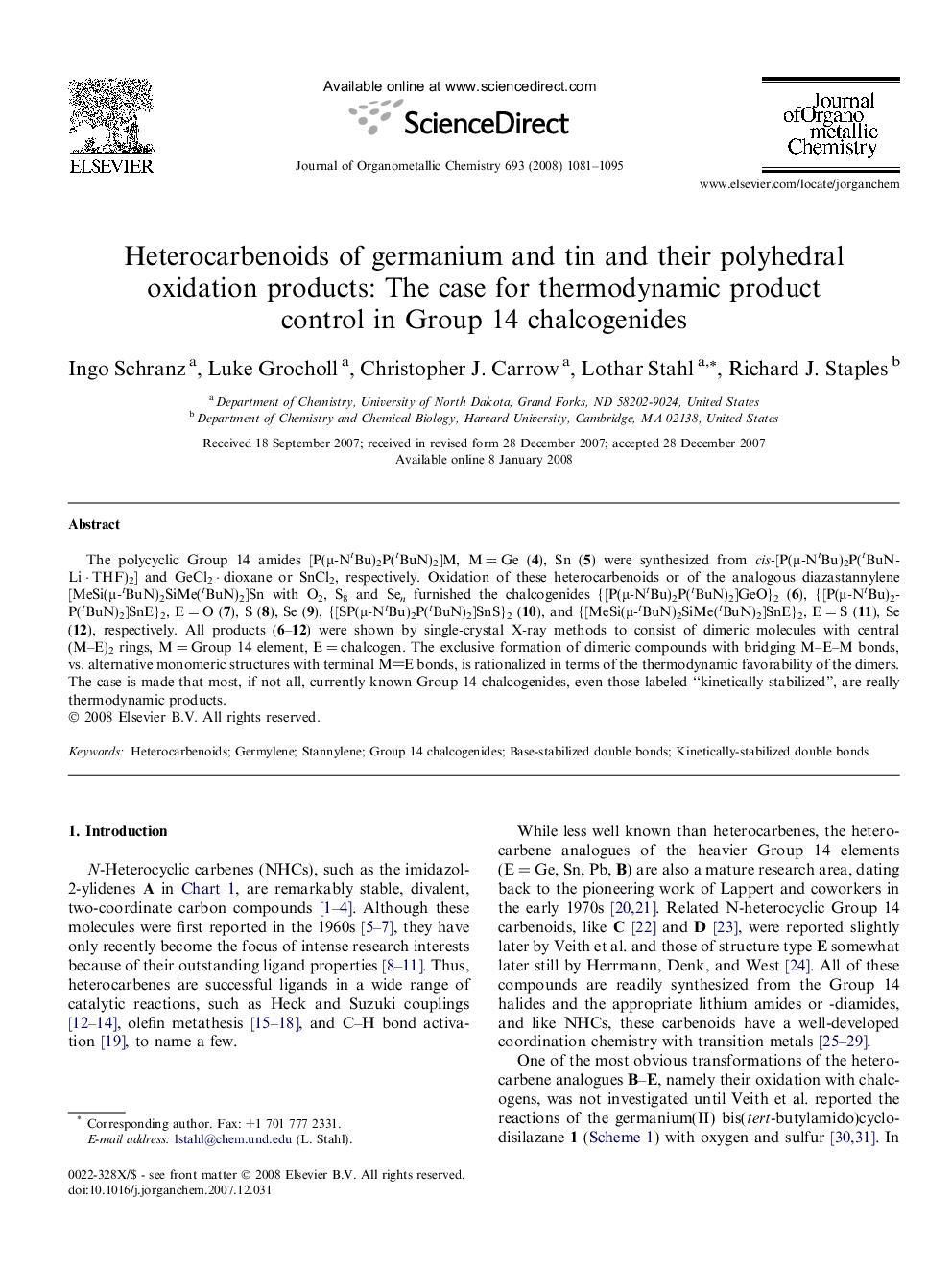| Article ID | Journal | Published Year | Pages | File Type |
|---|---|---|---|---|
| 1326037 | Journal of Organometallic Chemistry | 2008 | 15 Pages |
The polycyclic Group 14 amides [P(μ-NtBu)2P(tBuN)2]M, M = Ge (4), Sn (5) were synthesized from cis-[P(μ-NtBu)2P(tBuNLi · THF)2] and GeCl2 · dioxane or SnCl2, respectively. Oxidation of these heterocarbenoids or of the analogous diazastannylene [MeSi(μ-tBuN)2SiMe(tBuN)2]Sn with O2, S8 and Sen furnished the chalcogenides {[P(μ-NtBu)2P(tBuN)2]GeO}2 (6), {[P(μ-NtBu)2P(tBuN)2]SnE}2, E = O (7), S (8), Se (9), {[SP(μ-NtBu)2P(tBuN)2]SnS}2 (10), and {[MeSi(μ-tBuN)2SiMe(tBuN)2]SnE}2, E = S (11), Se (12), respectively. All products (6–12) were shown by single-crystal X-ray methods to consist of dimeric molecules with central (M–E)2 rings, M = Group 14 element, E = chalcogen. The exclusive formation of dimeric compounds with bridging M–E–M bonds, vs. alternative monomeric structures with terminal ME bonds, is rationalized in terms of the thermodynamic favorability of the dimers. The case is made that most, if not all, currently known Group 14 chalcogenides, even those labeled “kinetically stabilized”, are really thermodynamic products.
Graphical abstractThe oxidation of the heterocarbenoids [E′(μ-NtBu)2E′(tBuN)2]M, M = Ge, Sn; E′ = P, SiMe with chalcogens (E) furnished the dimeric chalcogenides {[E′(μ-NtBu)2E′(tBuN)2]ME}2, whose degree of aggregation is controlled by thermodynamics. The case is made that most currently known Group 14 chalcogenides, even those labeled “kinetically stabilized”, are really thermodynamic products.Figure optionsDownload full-size imageDownload as PowerPoint slide
